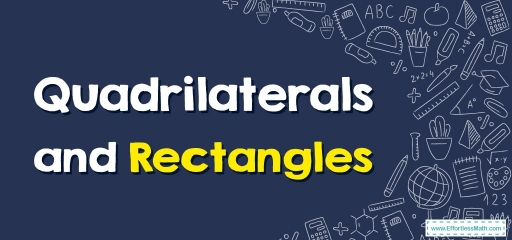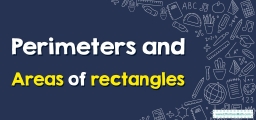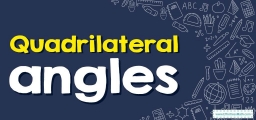Quadrilaterals and Rectangles

- \(4\) identical sides
- \(4\) right angles
- \(2\) pairs of parallel sides
- \(2\) identical diagonals
- Diagonals that are perpendicular to one another
- Diagonal which bisect one another.
Rectangles
- \(2\) pairs of parallel sides
- \(4\) right angles
- Opposite sides of identical lengths
- \(2\) identical diagonals
- Diagonals that bisect one another
Parallelograms
- \(2\) pairs of parallel sides
- Opposing sides of identical lengths
- Opposing angles which are identical
- \(2\) diagonals that bisect one another.
Trapeziums
- The sides parallel to one another are known as bases.
In the figure above, GH and EF are bases. - The sides that are not parallel to one another are known as legs.
In the figure above, FH and are legs.
Quadrilaterals and Rectangles – Example 1:
In this shape, both pairs of opposite sides are parallel. So, this quadrilateral is a parallelogram.
Quadrilaterals and Rectangles – Example 2:
What is the perimeter of a rectangle whose length is \(14\) cm and whose width is \(9\) cm?
Solution:
The formula for the perimeter of a rectangle = \(2\) (Length + Width). So, the perimeter of a rectangle \(= 2(14+9)=46\)
Exercises for Quadrilaterals and Rectangles
1. Write the appropriate name of each quadrilateral.
2. What is the perimeter of a rectangle whose length is \(20\) cm and whose width is \(15\) cm?
- \(\color{blue}{Trapezoid}\)
- \(\color{blue}{70}\)
Related to This Article
More math articles
- 5th Grade MCAS Math Practice Test Questions
- How to Do Percentage Calculations? (+FREE Worksheet!)
- How to Calculate the Area of Trapezoids? (+FREE Worksheet!)
- 6th Grade LEAP Math Worksheets: FREE & Printable
- 8th Grade IAR Math Worksheets: FREE & Printable
- Algebra Puzzle – Challenge 44
- Best Ergonomic Chairs for Online Teachers in 2026
- Integrals Made Easier Using Tables: A Complete Explanation And Examples
- How to Divide Mixed Numbers? (+FREE Worksheet!)
- The Ultimate TASC Math Formula Cheat Sheet




















What people say about "Quadrilaterals and Rectangles - Effortless Math: We Help Students Learn to LOVE Mathematics"?
No one replied yet.